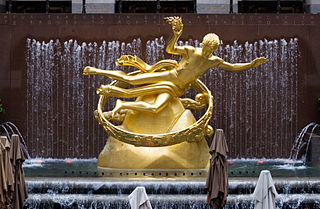This article includes a list of general references, but it lacks sufficient corresponding inline citations .(October 2022) |
This is a list of buildings that are examples of the Art Deco architectural style in Idaho, United States.
Contents

This article includes a list of general references, but it lacks sufficient corresponding inline citations .(October 2022) |
This is a list of buildings that are examples of the Art Deco architectural style in Idaho, United States.




The Roman Catholic Diocese of Boise Regions are deaneries for geographic areas of the state of Idaho. The areas are further defined by parishes, stations, and chapels. The Diocese of Boise is a suffragan of the Roman Catholic Archdiocese of Portland.

John Everett Tourtellotte was a prominent western American architect, best known for his projects in Idaho. His work in Boise included the Idaho State Capitol, the Boise City National Bank, the Carnegie Library, and numerous other buildings for schools, universities, churches, and government institutions. From 1922 to 1930, he worked in Portland, Oregon.
Tourtellotte & Hummel was an American architectural firm from Boise, Idaho and Portland, Oregon.

The Art Deco style, which originated in France just before World War I, had an important impact on architecture and design in the United States in the 1920s and 1930s. The most famous examples are the skyscrapers of New York City including the Empire State Building, Chrysler Building, and Rockefeller Center. It combined modern aesthetics, fine craftsmanship and expensive materials, and became the symbol of luxury and modernity. While rarely used in residences, it was frequently used for office buildings, government buildings, train stations, movie theaters, diners and department stores. It also was frequently used in furniture, and in the design of automobiles, ocean liners, and everyday objects such as toasters and radio sets. In the late 1930s, during the Great Depression, it featured prominently in the architecture of the immense public works projects sponsored by the Works Progress Administration and the Public Works Administration, such as the Golden Gate Bridge and Hoover Dam. The style competed throughout the period with the modernist architecture, and came to an abrupt end in 1939 with the beginning of World War II. The style was rediscovered in the 1960s, and many of the original buildings have been restored and are now historical landmarks.